Moissanite and cubic zirconia stand as ethical substitutes for the highly-coveted diamond. With an increasing global concern for social and environmental responsibility, the pursuit of ethical and sustainable merchandise has grown remarkably. This movement has fostered a keen attraction towards unconventional gems as an alternative to diamonds, amongst which moissanite and cubic zirconia have become prominent contenders. Within this composition, we shall dissect the distinctions between moissanite and cubic zirconia, the ecological and ethical implications associated with their production, and the rationale behind their surge in popularity.
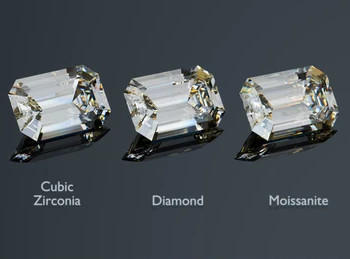
Moissanite vs. Cubic Zirconia: What's the Difference?
#HISTORY AND ORIGIN
-Moissanite, unlike its mineral counterparts, can be considered extraterrestrial in nature due to its origin. The discovery of this gemstone dates back to 1893 when Henri Moissan unearthed minuscule particles of what we now know as moissanite from a crater caused by a meteorite collision in Arizona. At the time, Moissan mistakenly believed that he had stumbled upon diamonds. However, upon conducting a thorough analysis of the particles, he realized that they were not made of carbon but rather silicon carbide.
Moissanite, a naturally occurring mineral, is a rare gemstone that is infrequently found in nature. As a result, the majority of moissanite gems available in the market today are produced in laboratory settings. Despite the fact that moissanite has been designed to simulate a diamond, there are a few distinct differences that set it apart from its diamond counterpart.
-As a viable substitute for diamond engagement rings, cubic zirconium has gained popularity among consumers. Unlike moissanite, cubic zirconium is entirely man-made and crafted in laboratory settings. However, it is specially formulated to match the natural radiance of diamonds. The name cubic zirconium is derived from the crystal structure's cubic symmetry and the stone's chemical composition, which is primarily composed of zirconium oxide.
Cubic zirconia was first identified by German mineralogists in its natural form, but the industrial-scale production of single-crystal cubic zirconia began in France during the 1960s. The Soviets later mastered the manufacturing process. While both lab-grown diamonds and cubic zirconia are created artificially, there is a key distinction between them. Lab-grown diamonds are made up of carbon atoms, just like their naturally occurring counterparts, whereas cubic zirconia is exclusively designed to emulate the appearance of diamonds without actually being one.
Cubic zirconia is a highly prized gemstone due to its low-maintenance nature and its ability to evoke the look and feel of a genuine diamond. As opposed to moissanite, cubic zirconia can be made completely colorless, making it comparable to diamonds in terms of color. This feature is a significant factor in the gemstone's popularity among buyers seeking an affordable yet luxurious alternative to diamond jewelry.
#DURABILITY
-Moissanite is a rare mineral found in meteorites and volcanic rock types. Today, moissanite is typically created in a laboratory using advanced technology that recreates the conditions that naturally produce the mineral. Moissanite has a hardness rating of 9.25 on the Mohs scale, which makes it almost as hard as a diamond and very durable for everyday wear.
-On the other hand, Cubic zirconia is a manufactured material first produced in 1976. It is made by melting zirconium oxide and other minerals at high temperatures and then cooling them rapidly to create a crystal structure. Cubic zirconia is less durable than moissanite, with a --hardness rating of 8.5 on the Mohs scale, which makes it more prone to scratching and damage over time.
#FIRE AND BRILLIANC
Moissanite's index of refraction exceeds that of cubic zirconia, leading to a higher degree of fire and brilliance. Consequently, moissanite emanates an impressive display of light that is sure to captivate onlookers. Its luminescence is unparalleled, emanating a brilliant and incandescent radiance.
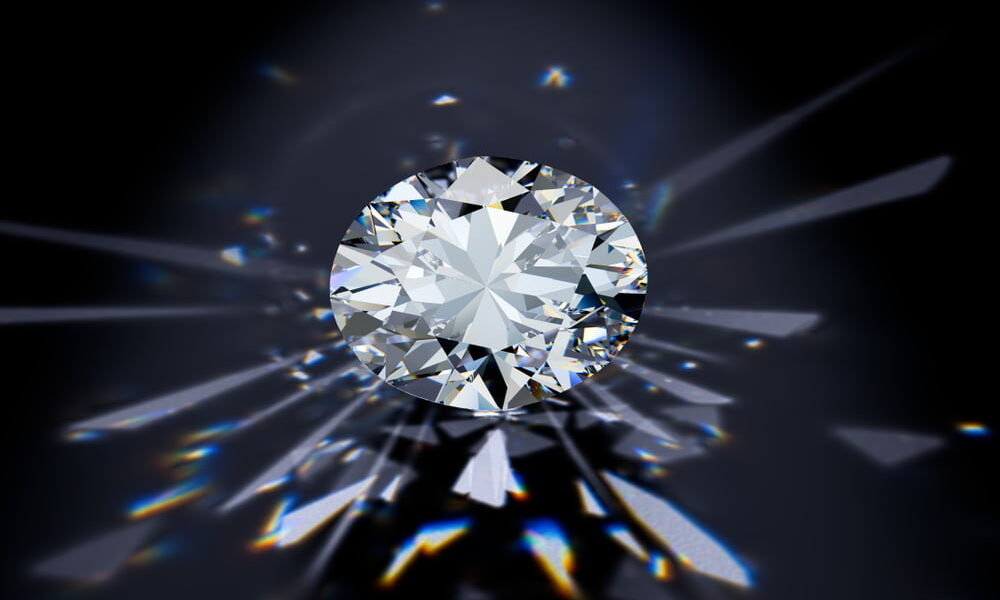
#COLOR AND CLAIRITY
Moissanite and Cubic Zirconia, the two gems at hand, present diverse chromatic options, ranging from ivory to sunflower yellow and a rosy hue. Nevertheless, in terms of tint, Moissanite dominates Cubic Zirconia. Why is this so, one may ask? The reason is that Moissanite boasts a higher clarity ranking compared to Cubic Zirconia. Such an order indicates that it contains fewer blemishes and impurities, thus rendering it more pure and unadulterated.
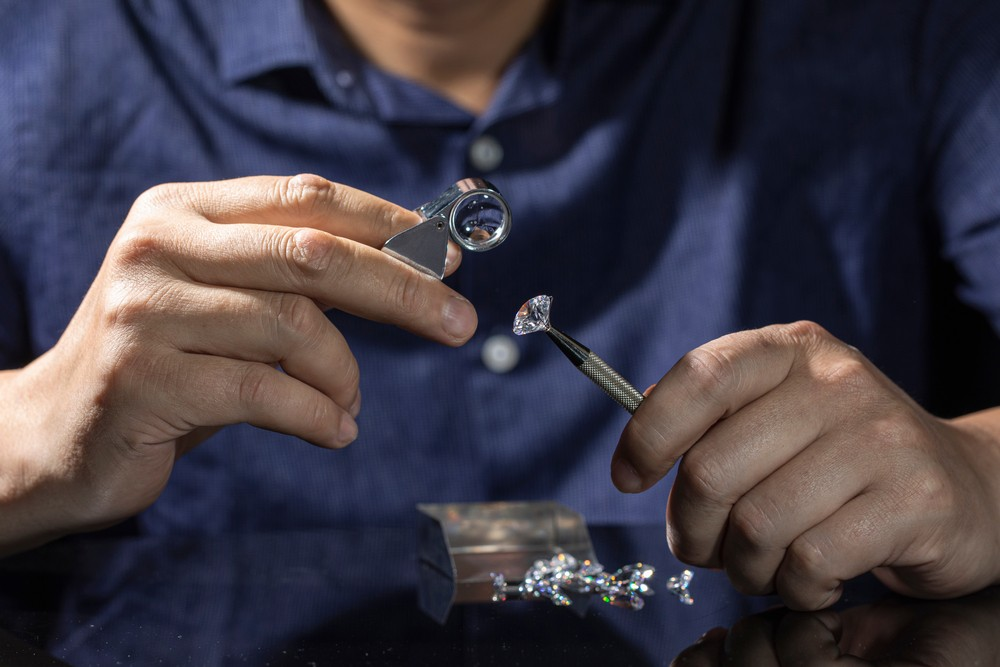
#PRICE
A significant cost differential exists between moissanite, cubic zirconia, and diamonds. Both moissanite and cubic zirconia are cheaper alternatives to diamonds, yet they vary in price. Moissanite is the more expensive option of the two, but it is still markedly less costly than diamonds. Meanwhile, cubic zirconia is the most budget-friendly option of the two alternatives.
Moissanite is more expensive than cubic zirconia but is still significantly less costly than diamonds. The cost of a moissanite engagement ring will vary depending on the size and quality of the stone. Still, it is generally less expensive than a diamond engagement ring of similar size and quality.
As for the cost, cubic zirconia is significantly more economical than moissanite and is commonly utilized in fashion jewelry. It is the more budget-friendly alternative of the two.
#ETHICAL AND ENVIRONMENTAL IMPACT
As society grows more socially and environmentally conscious, the demand for ethically sourced and sustainable products continues to surge. As a result, the popularity of alternative gems to diamonds, such as moissanite and cubic zirconia, has skyrocketed.
Moissanite and cubic zirconia are both viable options in ethical and sustainable diamonds. Moissanite is a rare, naturally occurring mineral, whereas cubic zirconia is a synthesized gem that is more easily produced. Due to its scarcity, moissanite is generally more valuable than cubic zirconia. On the other hand, cubic zirconia's lower cost makes it a more appealing alternative for those who want the diamond look without the price tag.
Despite their similarities in rarity and cost, both moissanite and cubic zirconia are ethical alternatives to diamonds. Diamonds, particularly those sourced from conflict zones, are often linked to human rights abuses and environmental damage. In contrast, both moissanite and cubic zirconia are produced in a lab environment and do not have the same ethical concerns associated with diamond mining.
Regarding environmental impact, moissanite and cubic zirconia are more sustainable than diamonds. The mining and production of diamonds can significantly affect the environment, including deforestation, soil erosion, and water pollution. In contrast, moissanite and cubic zirconia are created in a lab using minimal resources and do not have a significant environmental impact.
Why are Moissanite and Cubic Zirconia Becoming Popular?
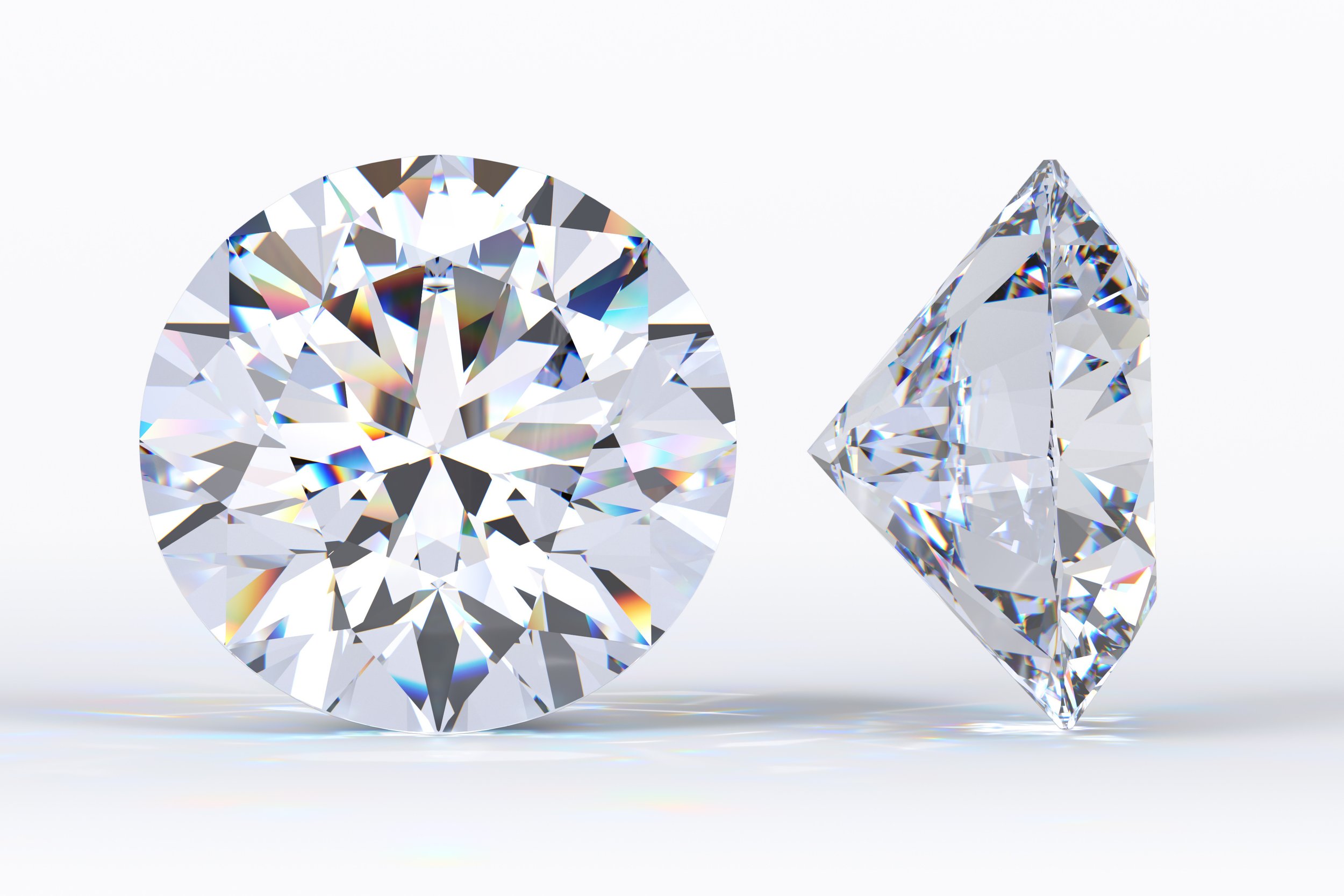
The escalating prominence of moissanite and cubic zirconia can be credited to various factors.
-For one, they are both ethical and sustainable substitutes for diamonds, making them particularly attractive to consumers who have grown more socially and environmentally conscious.
-Second, moissanite and cubic zirconia offer a more budget-friendly option than diamonds, contributing to their popularity. They present a diamond-like appearance without excessive expense. While moissanite is typically less costly than cubic zirconia, as it is a more scarce gemstone, both alternatives carry a notably lower price tag than diamonds.
-Third, moissanite and cubic zirconia present various alternatives for customers seeking a semblance of a diamond. The former boasts a superior refractive index to diamonds, culminating in a more radiant and scintillating appearance. The latter, in contrast, surpasses moissanite in the department of colorlessness, rendering it a general preference for those desiring a diamond-esque appearance.
Moissanite Myths and Misconceptions: Separating Fact from Fiction
As one of the most popular diamond alternatives on the market today, Moissanite has gained a lot of attention over the years. However, with its growing popularity comes many myths and misconceptions that can make it challenging to understand this unique gemstone.
1.Moissanite is a Fake Diamond?
Many people mistakenly believe that Moissanite is a fake diamond or a cheap imitation. However, Moissanite is a gemstone in its own right, and it has its own unique properties and characteristics that set it apart from diamonds. In fact, Moissanite has a higher refractive index than diamonds, which means it has more fire and brilliance. Moissanite also has a different chemical composition than diamonds, with a formula of SiC (silicon carbide) rather than carbon.
2.Moissanite is Too Expensive
One of the biggest misconceptions about Moissanite is that it is too expensive. While Moissanite can be pricier than other diamond alternatives like cubic zirconia, it is still much more affordable than diamonds. In fact, Moissanite can cost up to 90% less than a diamond of similar size and quality. This makes Moissanite an excellent option for those who want a high-quality gemstone without breaking the bank.
3.Moissanite is Too Sparkly
While Moissanite does have a high refractive index and can be very sparkly, this doesn't mean that it is too flashy or over-the-top. Moissanite is a versatile gemstone that can be cut in a variety of ways, from classic round brilliant cuts to more unique shapes like cushion or pear. This means that you can choose a Moissanite gemstone that suits your personal style and preferences, whether you prefer a more understated look or something with a bit more sparkle.
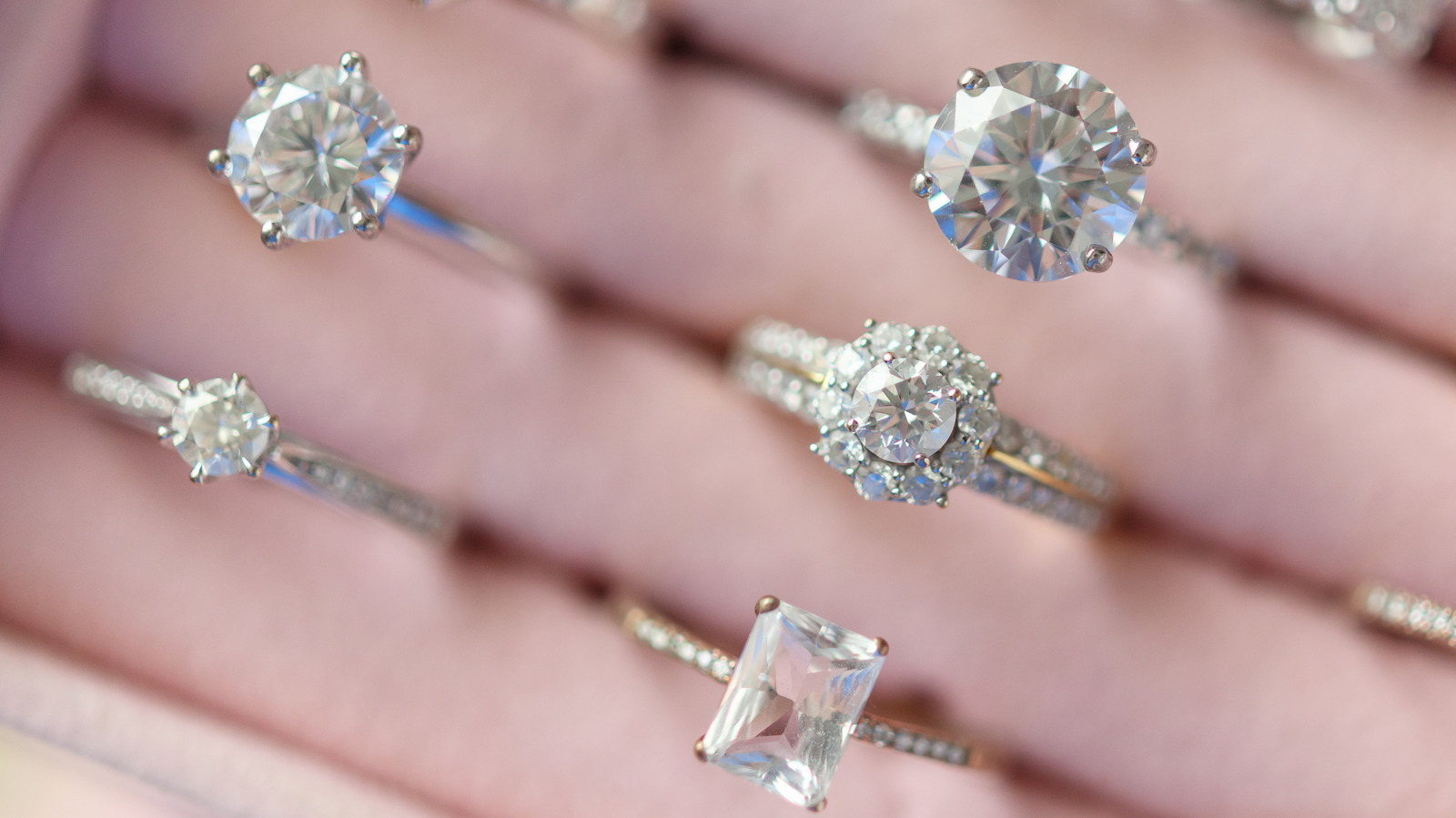
Conclusions
-Choosing moissanite and cubic zirconia will ultimately depend on your preferences and priorities. Both materials offer an ethical alternative to traditional diamond jewelry, and each has unique benefits and drawbacks to consider.
-In summary, while moissanite and cubic zirconia may seem similar on the surface, there are some key differences to remember. Moissanite is a naturally occurring mineral highly durable and considered more ethical and environmentally friendly than cubic zirconia. On the other hand, Cubic zirconia is a manufactured material that is less durable and may be associated with lower-quality jewelry. When choosing between these two alternatives, it is essential to consider your individual needs and priorities to make the best decision for you.
Copyright ©2025 Wuzhou Tianyu Gems Co., Ltd - All Rights Reserved.